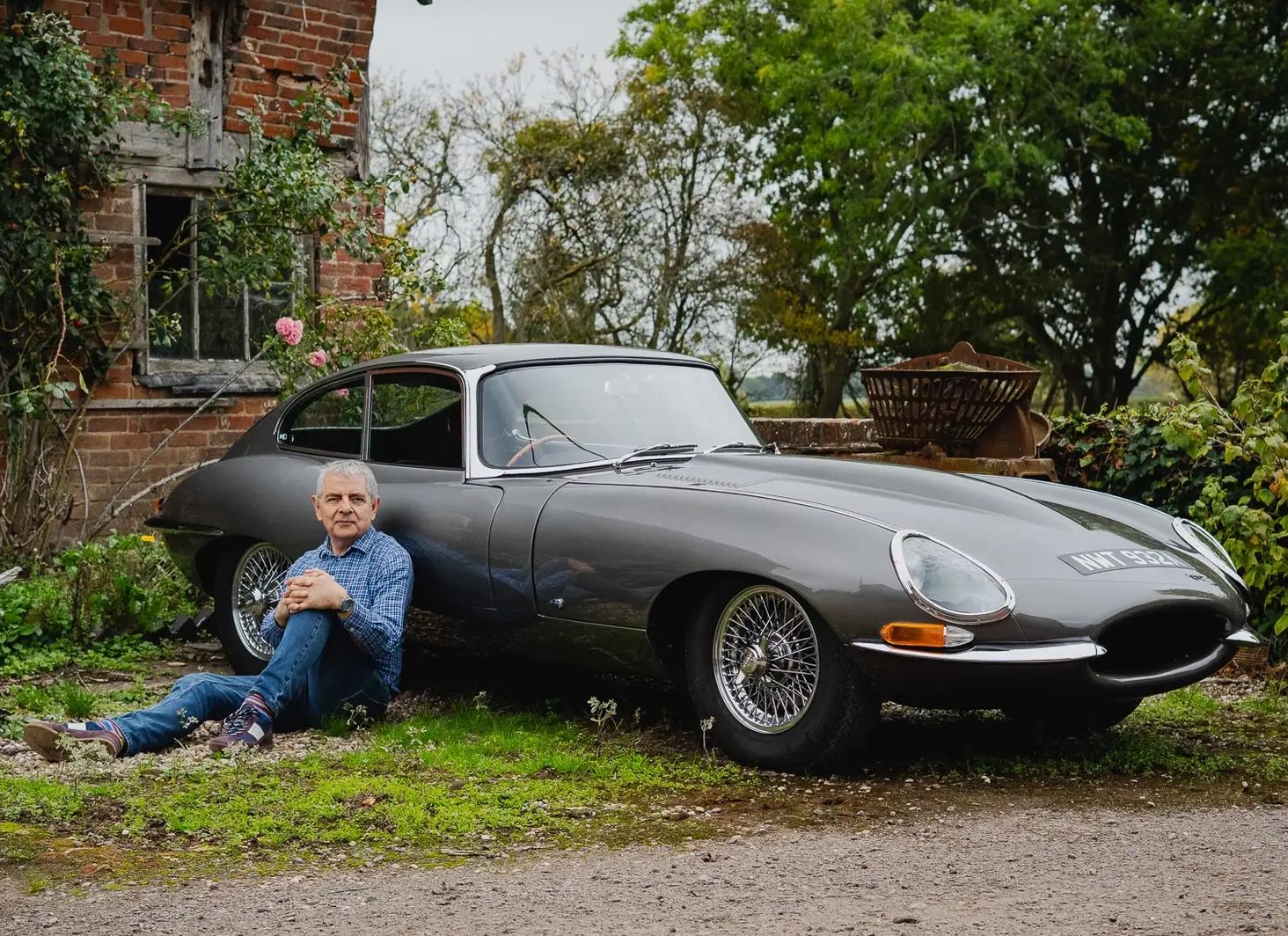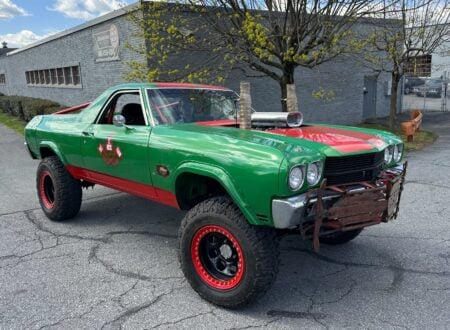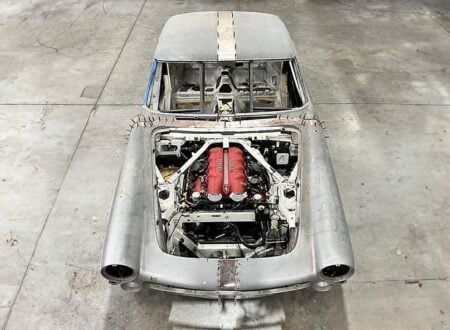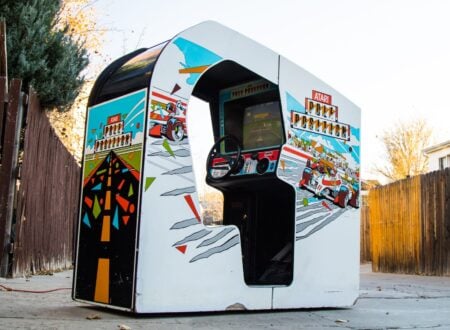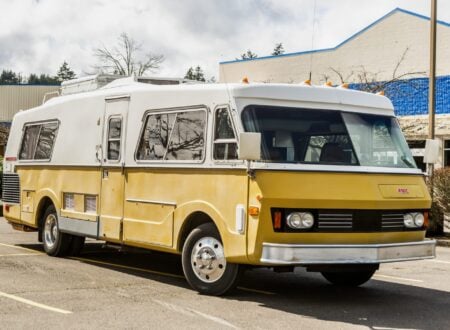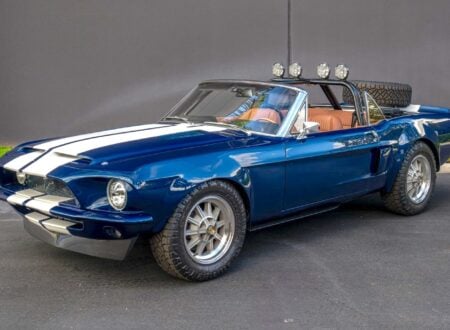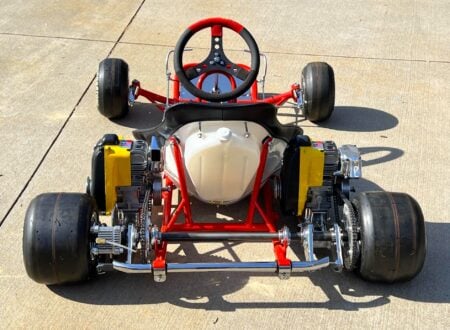This 1963 Jaguar E-Type currently belongs to Rowan Atkinson of Mr Bean fame, and it was driven by him in the Netflix series, Man vs Bee. It’s now due to roll across the auction block with Iconic Auctioneers early next month.
Atkinson is a well-respected car guy, having owned everything from a McLaren F1 to a Land Rover Defender – and just about everything in between. Though he’s known for bumbling comedic characters on the big screen, he’s actually an Oxford University educated electrical engineer and a former member of the Oxford Revue comedy group.
Fast Facts: Rowan Atkinson’s Jaguar E-Type
- This 1963 Jaguar E-Type Series I Fixed-Head Coupé belongs to actor Rowan Atkinson and featured prominently in his 2022 Netflix comedy Man vs Bee. The car was driven by Atkinson’s character during several key scenes and sustained intentional on-screen “damage,” later repaired but with one cut panel deliberately left visible to preserve its cinematic history.
- Originally finished in Opalescent Gunmetal Grey – the same color as the 1961 Geneva Motor Show debut car – this early-production 3.8 liter E-Type was first delivered new to the United States in left-hand drive form. It returned to the UK in 1989, where it was converted to right-hand drive and fitted with a new interior, chrome trim, and stainless steel exhaust.
- The car retains its original matching-numbers engine block paired with a replacement cylinder head. Jaguar’s 3.8 liter XK inline-six produced 265 bhp and 260 lb ft of torque, giving early E-Types a 150 mph top speed and roughly 7-second 0 to 60 mph time. The model’s combination of Malcolm Sayer’s aerodynamic design and Jaguar’s engineering knowhow quickly established its reputation for both good-looks and top-flight performance.
- Offered from Atkinson’s personal ownership, this E-Type will be sold by Iconic Auctioneers in early November with no reserve. It represents a rare convergence of early Series I collectability, genuine film provenance, and celebrity ownership.
History Speedrun: The First-Generation Jaguar E-Type
When Jaguar unveiled the E-Type in March of 1961 the world stood up and took notice. It marked the culmination of nearly a decade of development that rooted itself in the marque’s racing success with the dominant 1950s-era Le Mans-winning D-Type, and in the work of aerodynamicist Malcolm Sayer.
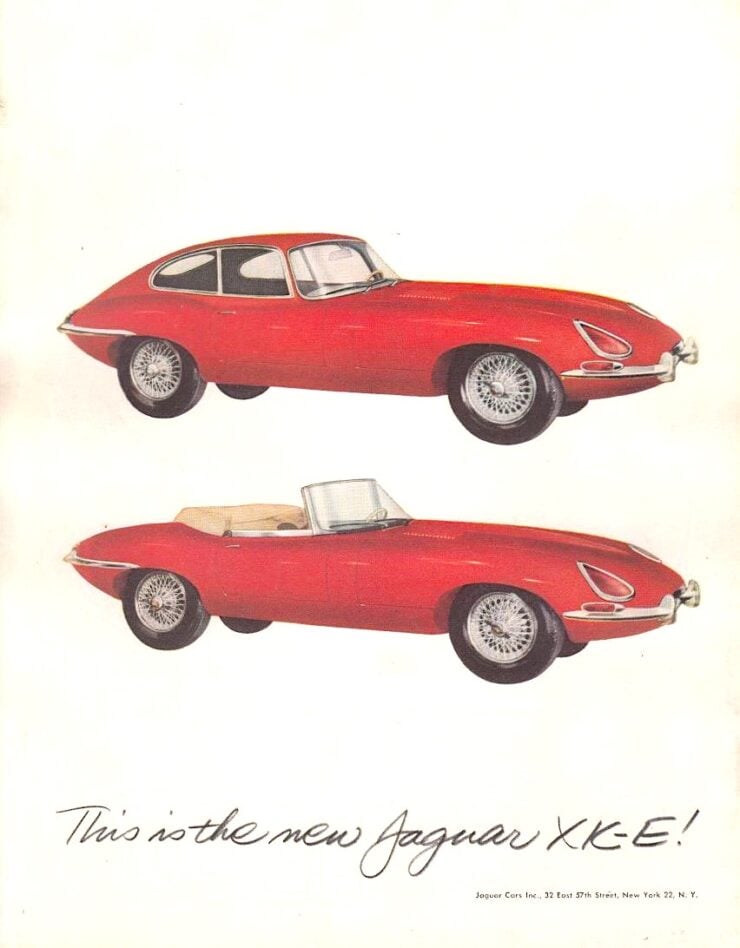

The E-Type’s lineage was clear from the start, the Jaguar D-Type had proven that efficient aerodynamics, lightweight construction, and nimble handling could win at Le Mans against far more powerful rivals.
The E-Type took that racing DNA and recast it into a road car. Malcolm Sayer, classically trained in mathematics and aerodynamics, often sketched full-scale designs on long rolls of paper, or even directly on the walls.
His approach wasn’t purely aesthetic – he developed aircraft-inspired designs that reduced drag and that optimized airflow over the nose, headlights, windscreen, and greenhouse. The car’s long, sloping bonnet, the curvature of the body panels, and the short overhangs all flowed from those careful aerodynamic considerations.
Jaguar’s engineers developed a clever hybrid structural arrangement – a monocoque unitary body tub combined with a tubular steel front subframe that carried the engine, front suspension, and front bodywork, bolted to the shell.
This design eliminated the need for a ladder chassis and kept weight and complexity low. At the rear, engineers under Bob Knight developed an independent suspension using lower wishbones and inboard disc brakes, with half-shafts attached to the body via a subframe. The body was primarily steel, though lightweight and low-drag development cars experimented with aluminum panels bonded and riveted to the tub.
The first generation E-Type, typically referred to as the Series 1, was produced between 1961 and 1968 (though the “Series 1.5” transitional version did blur the line). At launch, the cars used an adaptation of Jaguar’s XK six-cylinder engine: a 3.8 liter unit fitted with triple SU carburetors, producing 265 bhp at 5,500 rpm and 260 lb ft of torque.
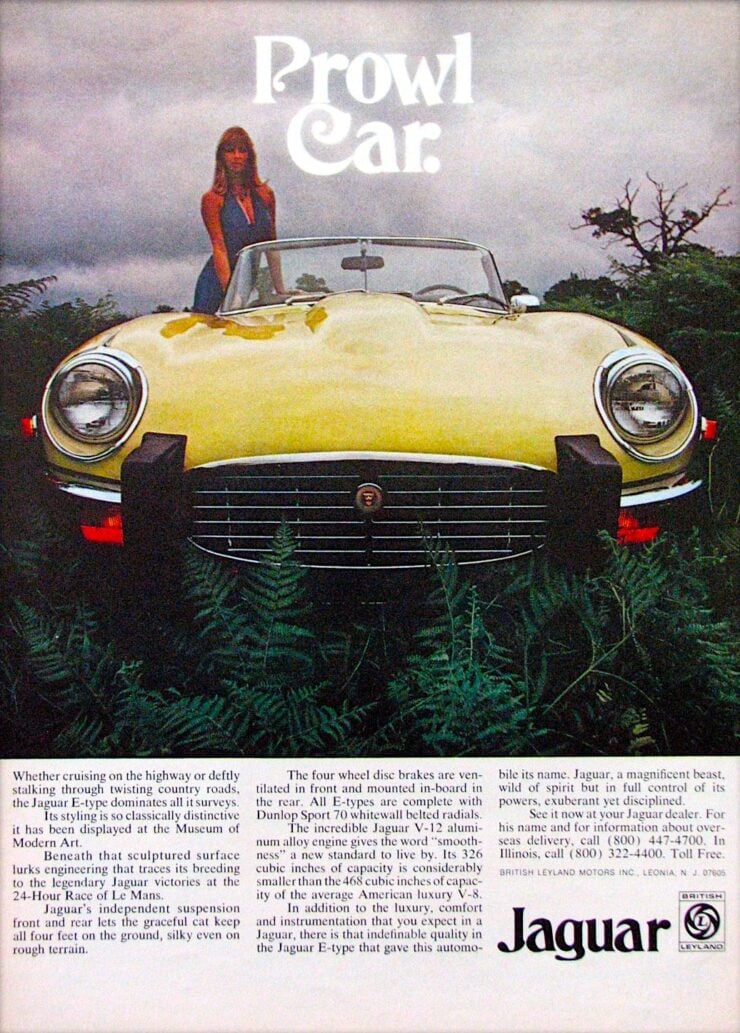

That combination resulted in a claimed top speed of around 150 mph and 0 to 60 mph in roughly 7.0 to 7.2 seconds. Early cars used a flat-floor design and external bonnet latches (opened using a tool), later replaced by a dished floor, internal latches, and better ergonomics. All 3.8 liter models used a Moss 4-speed gearbox without synchro on first.
In October of 1964, Jaguar enlarged the engine to 4.2 liters but despite the displacement gain, power stayed at 265 bhp – the displacement boost did lead to a torque increase though, up to 283 lb ft, giving noticeably better mid-range response.
The 4.2 also introduced a fully synchromesh 4-speed gearbox of Jaguar’s own design and an alternator in place of the dynamo. The E-Type had already employed an electric cooling fan from launch, but refinements were made to improve reliability. Official top speed rose slightly to around 153 mph, with 0 to 60 mph in 7.0 seconds.
All Series 1 cars carried full four-wheel disc brakes (rear inboard) and power assist, as well as rack-and-pinion steering. The standard wheels were 15×5 K wire wheels wearing Dunlop RS5 cross-ply tires, later cars moved to radials. Interiors had leather bucket seats, center-console instrumentation (aluminum trim at first, later vinyl or leather), and a luggage shelf behind the seats in coupes.
Within the first generation, two distinct body styles were offered – the two core configurations were the Roadster (the Open Two-Seater – OTS) and the Fixed-Head Coupé (or FHC). Both debuted at Geneva and New York in 1961.
In March of 1966, Jaguar introduced the longer-wheelbase 2+2 Coupe, lengthened by nine inches with a higher roofline to accommodate rear seats. It also became the first E-Type available with an optional automatic transmission, though (arguably) it never quite captured the elegance of the original design.
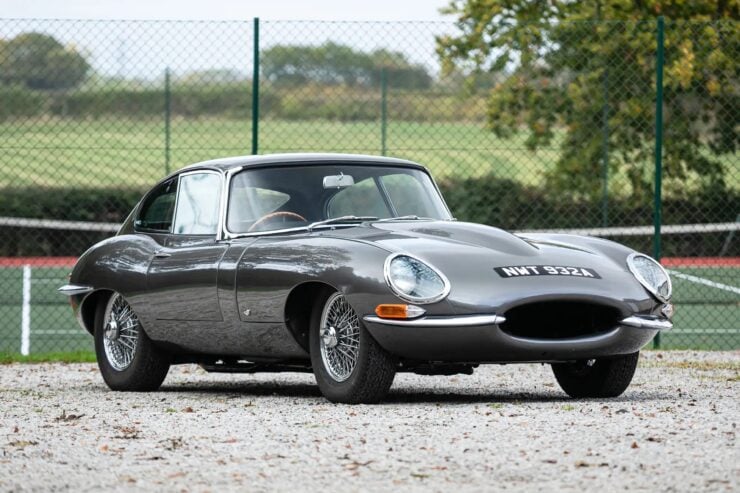

By 1967 and into 1968, Jaguar began implementing features later formalized in the Series 2 – open headlights (without the glass covers), twin cooling fans, rocker switches, and – for US emissions compliance – twin Zenith-Stromberg carburetors in place of the earlier triple SUs. These transitional cars are commonly referred to as the Series 1½.
The Series 1 and Series 1½ E-Types are now seen as highwater marks not just for Jaguar, but for automotive design as a whole – regularly landing in the top spot on lists of the most beautiful cars of all time.
The Rowan Atkinson Jaguar E-Type Shown Here
This 1963 Jaguar E-Type Series I 3.8 liter FHC is an early-production example finished in Opalescent Gunmetal Grey, the same shade used on the original 1961 Geneva Motor Show car, it was first supplied new to the United States in left-hand-drive form before returning to the UK in 1989.
Since then, it’s been converted to right-hand drive and fitted with a new interior including fresh seats, door cards, and carpets, along with new chrome trim and an SS exhaust system. Importantly, the car keeps its original matching-numbers engine block, though it now carries a replacement cylinder head.
This car became a bit of a celebrity in its own right, after being used by Rowan Atkinson in the 2022 Netflix series Man vs Bee, in which his character infamously damages the car while chasing a bee.
This E-Type was the actual vehicle featured in those scenes, including the sequence where the rear window and dashboard were destroyed and a section of the rear body was cut open. After filming, the car was sympathetically restored, receiving a replacement rear window and dashboard, and it comes with additional spares from the production.
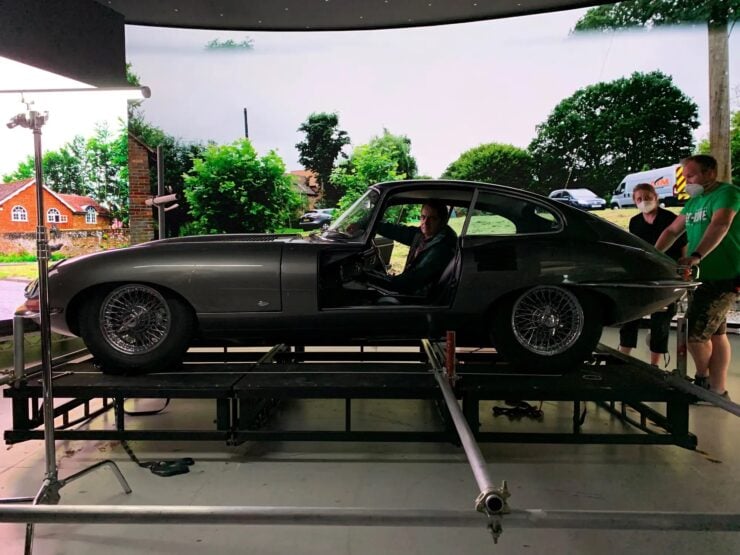

Atkinson chose to preserve one visible sign of its on-screen history – the section of rear bodywork that he cut during filming has been rubber-sealed back into place rather than fully repaired. Now offered from his own personal ownership, this car offers a rare blend of early-series desirability, celebrity provenance, and cinematic history.
The car is now due to cross the auction block with Iconic Auctioneers in early November, and it’s being offered without reserve.
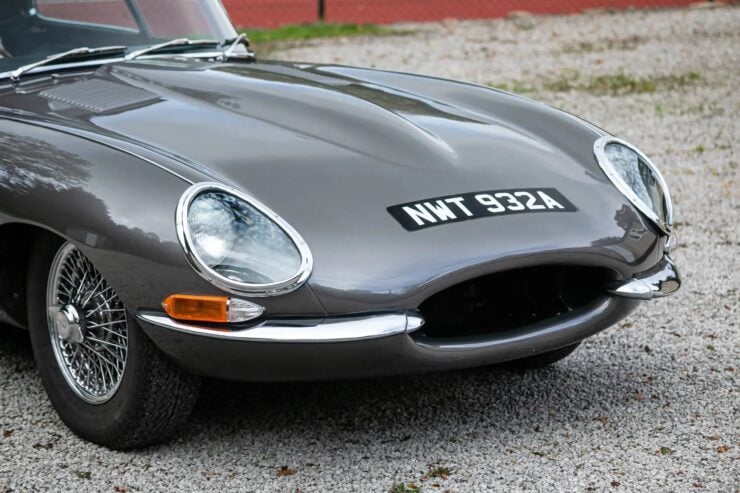
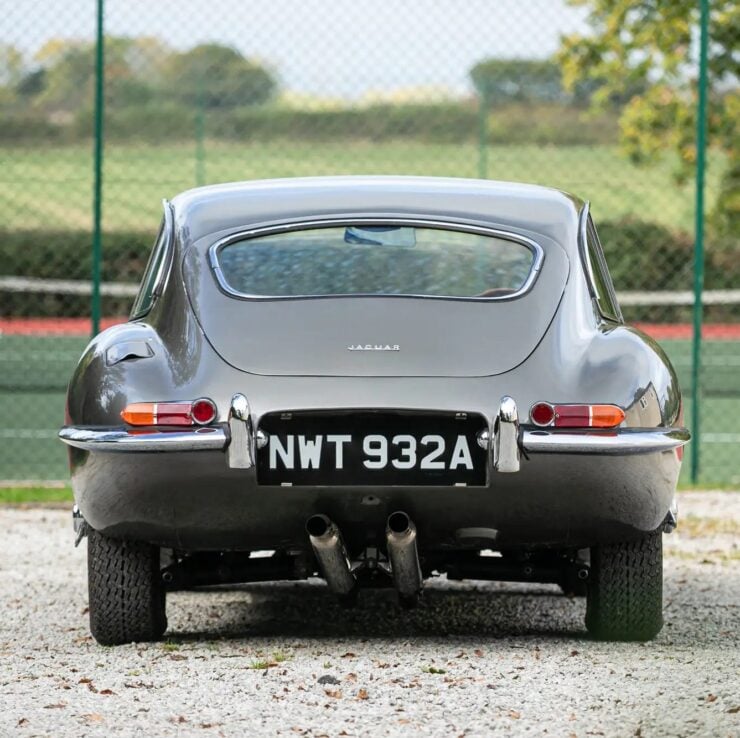
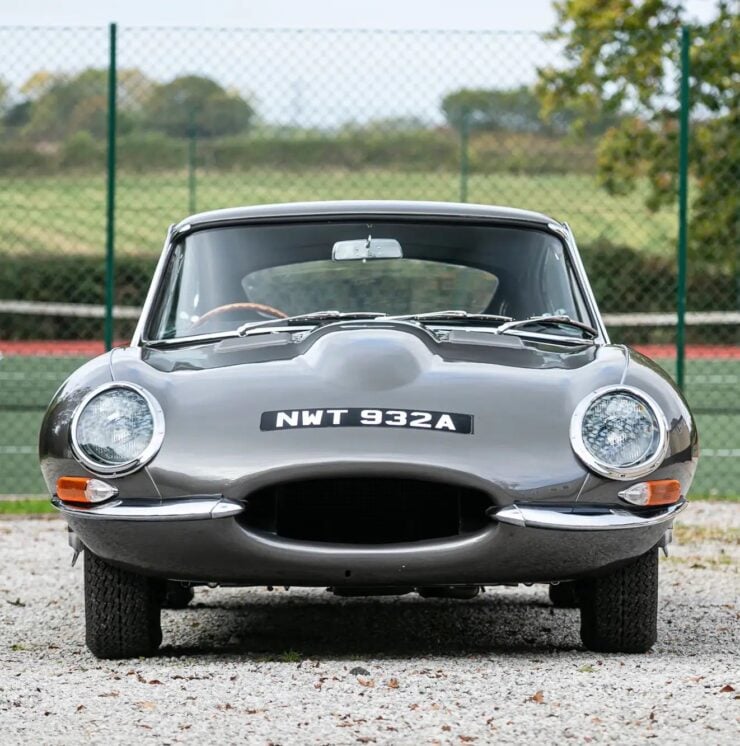
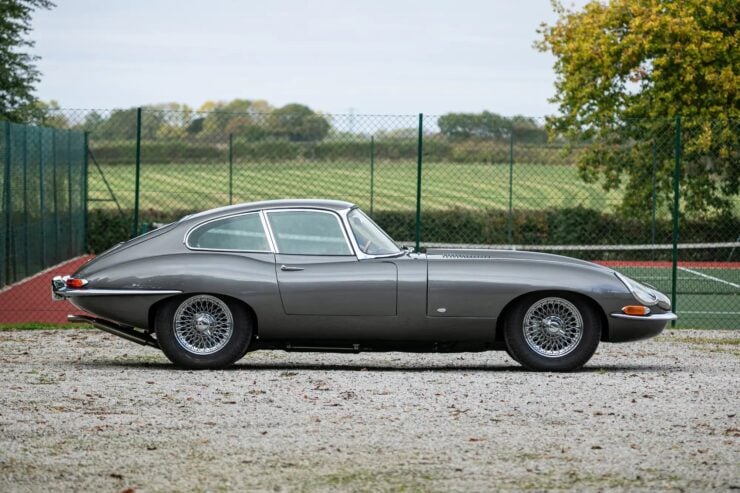
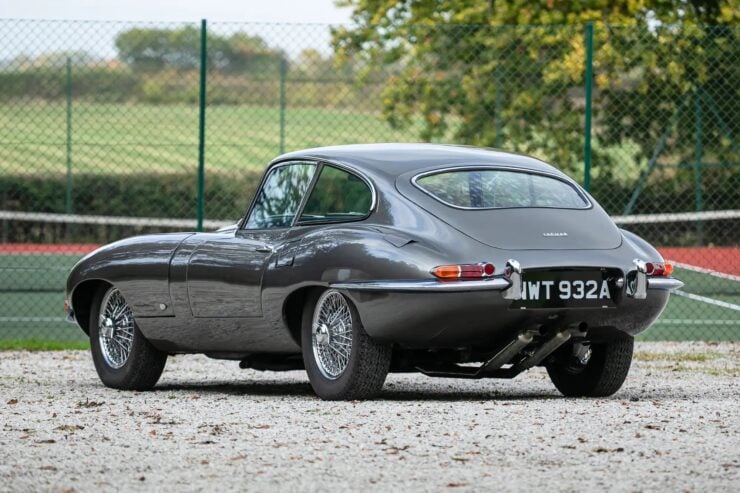
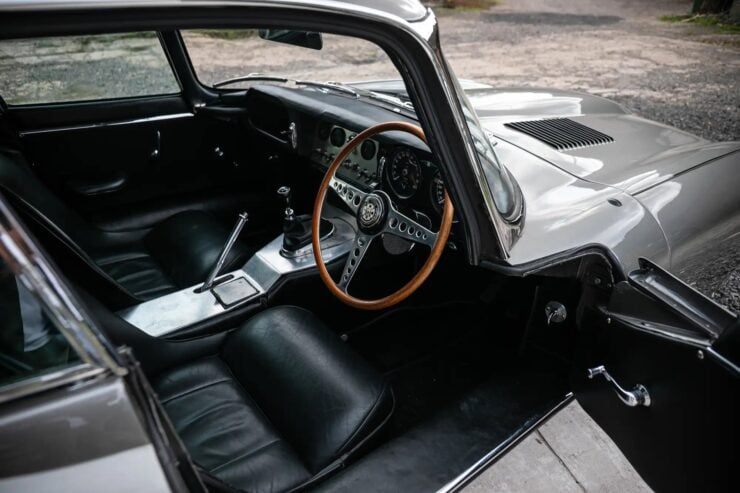
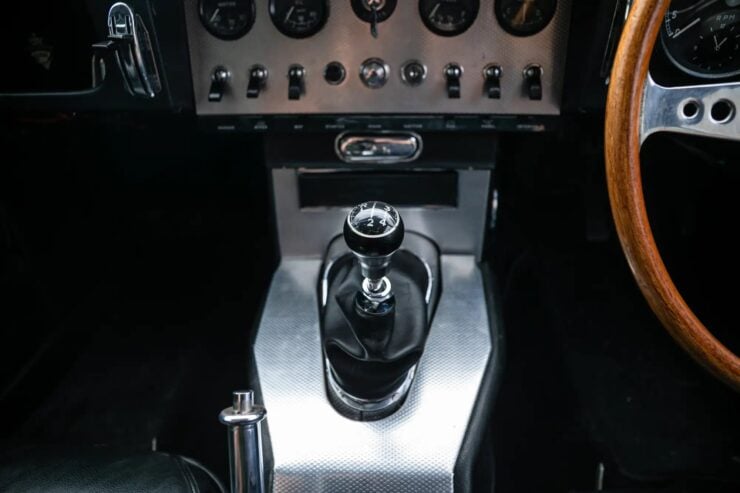
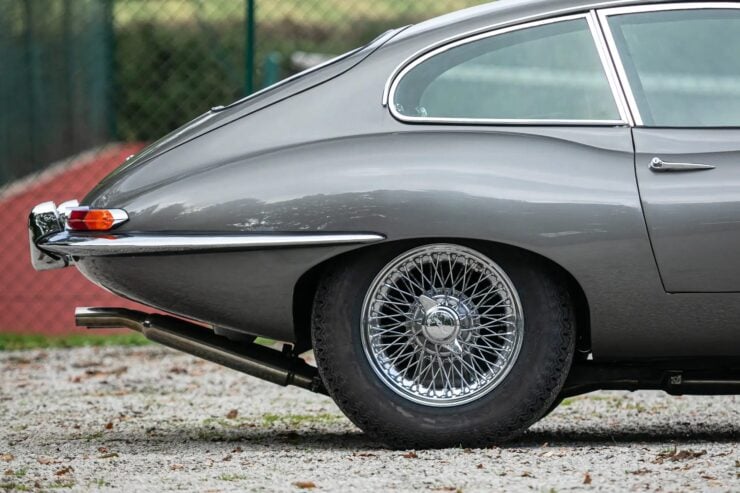
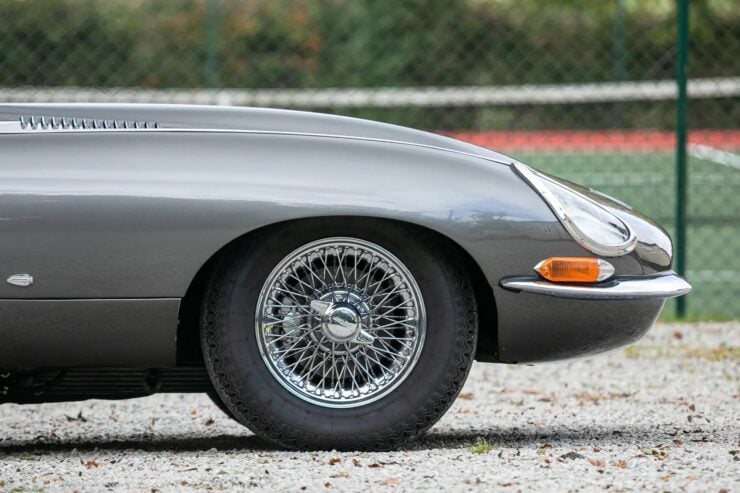
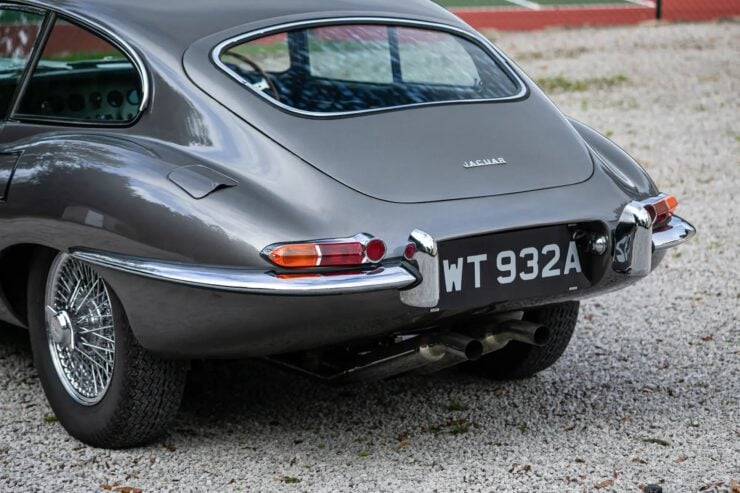
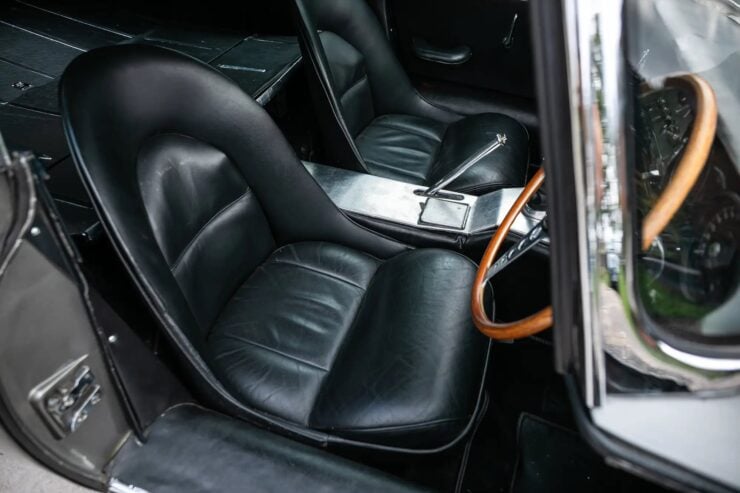
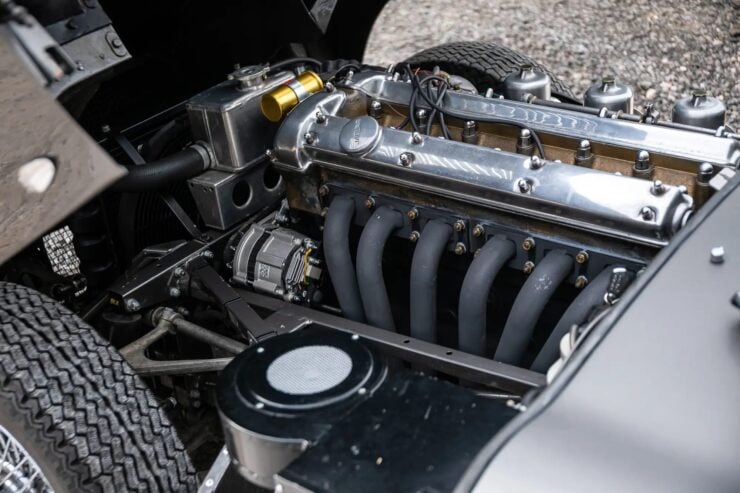
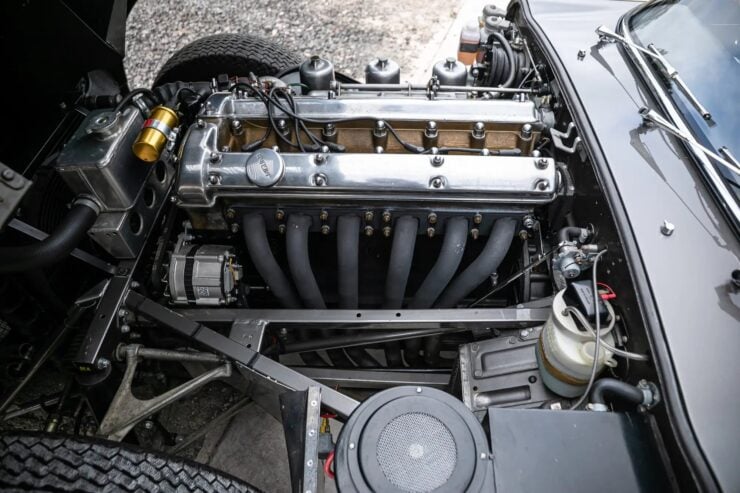
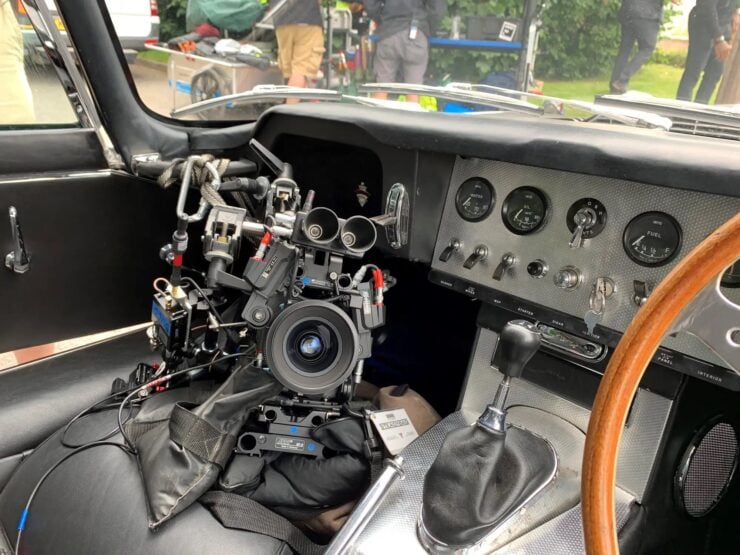
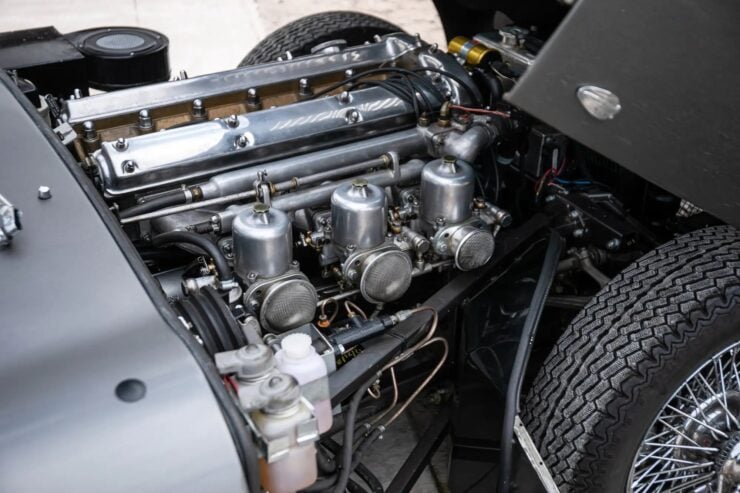
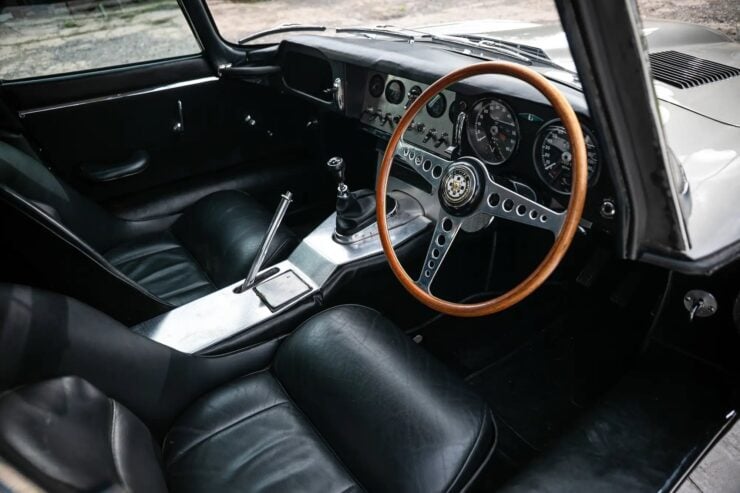

Images courtesy of Iconic Auctioneers

